What Climbing Kilimanjaro and Going to War Taught My Brother and Me
Nolan Peterson /
MOUNT KILIMANJARO, Tanzania—From the moment we met at the hotel in Amsterdam I knew the trip would be special.
“You ready for this?” I asked my brother, after I’d given him a big hug.
“No matter what, I’m getting up that damn mountain,” Drew replied with a grin. “It might be ugly, but there’s no way I’ll quit.”
I’d just arrived from Kyiv; Drew from New York City. And so there we were. Two brothers, reunited at long last on the eve of the final leg of our journey to Tanzania, where we were to climb 19,340-foot-high Mount Kilimanjaro, Africa’s tallest peak.
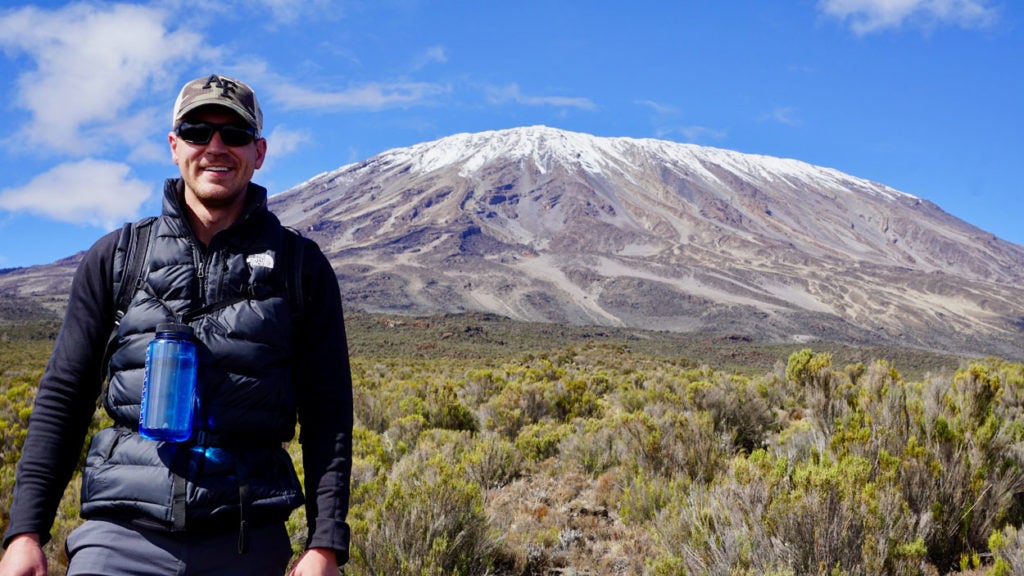
Brothers by blood, Drew and I are also united by our military service. We both graduated from the Air Force Academy and became officers. During his military career, Drew worked for the Air Force space program and the National Reconnaissance Office. He deployed twice to Afghanistan. I was a special operations pilot and deployed to Afghanistan and Iraq.
Our reunion in Amsterdam brought back a flood of memories.
I thought about holding Drew after he was born. I was only 4, but I clearly remember the doctor taking the Transformers toy out of my hand and replacing it with my infant brother. I was the first person in my family to hold him.
I also thought back to all the times over the years that I’d hugged Drew goodbye as we parted ways before going to war. At each farewell, we purposefully emblazoned the moment in our minds, implanting the memory as permanently as possible—not knowing if that was the last time we might see each other alive.
It’s a dark thought, I must admit. But if you’ve sent someone you love off to war, or if you’ve gone to war yourself, then you know what I mean. War does that to you. It reminds you of your mortality in a way that few other experiences can match—besides climbing mountains, perhaps.
One of those hugs stands out from all the rest.
It happened while I was in Afghanistan as an embedded war correspondent in 2013.
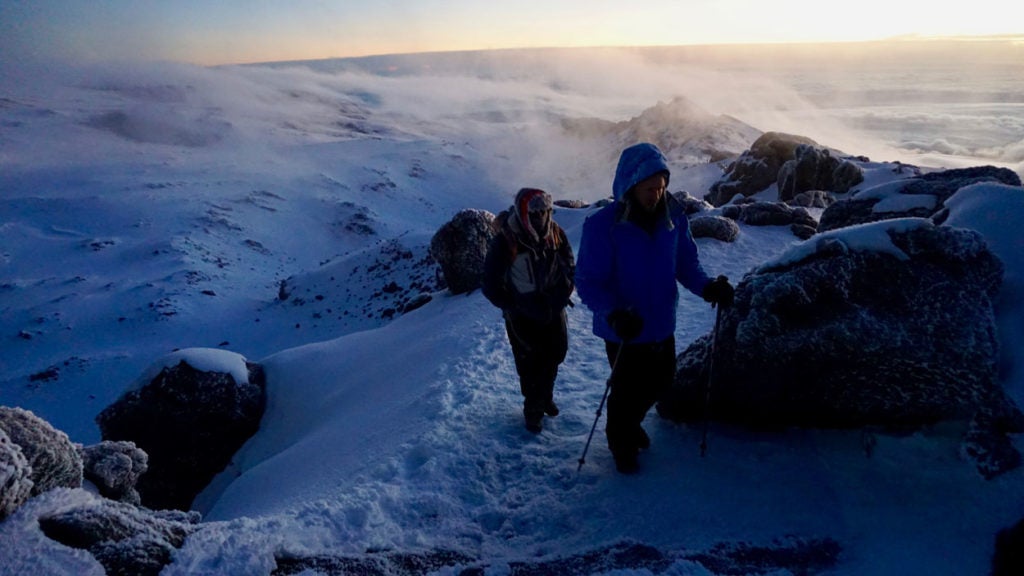
I met Drew at Bagram Air Base, where he was deployed at the time. We spent the day together, and even shared a few cigars as we watched F-16 fighter jets taking off at sunset, their afterburners glowing purple as they snarled the sound of freedom.
Later that night, shortly before I took a helicopter to a forward operating base near the border with Pakistan, Drew and I hugged each other goodbye.
They kept Bagram blacked out at night as a defense against Taliban rocket and mortar attacks. So, in the dark it was hard to see Drew’s face. I didn’t notice he was crying until he told me to be careful.
“Don’t be a hero,” he added, his words catching on his tears.
I’ll never forget that moment and those words.
Peace
How far our life paths have diverged over the years. Yet, how fundamentally similar Drew and I remain. For one, we’ve both returned to our former battlefields as civilians.
Drew returned to Afghanistan in 2016 to run a marathon in promotion of women’s rights. For my part, I’ve returned to both Afghanistan and Iraq as a journalist.
Drew and I also share another war, besides the one in Afghanistan. I’m speaking about the war in Ukraine—the war that has occupied the past five and a half years of my life.
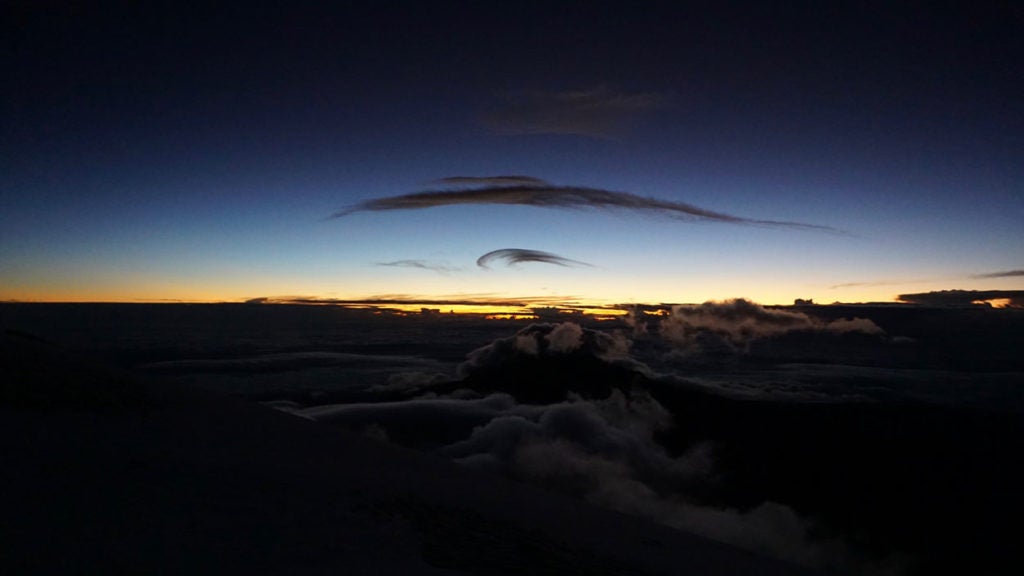
A few years ago, Drew and I launched a nonprofit called Mortales. Our mission is to raise money to help conflict victims around the world, as well as to provide financial relief to U.S. military veterans.
In 2017, Mortales funded TV and internet connections for a displaced persons facility near the front lines in eastern Ukraine. The project provided the people living there access to Ukrainian news and entertainment, whereas previously they’d only had access to information coming from Russia.
We also purchased an apartment for a Ukrainian family displaced by the war, paid the winter heating bill for three elderly people living in the front-line town of Marinka, and delivered a shipment of supplies to a displaced persons center in the town of Kurakhovo, near the front lines.
Mortales also raised $17,500 to support a women’s rights program in Afghanistan.
Together, in our work for Mortales, Drew and I have been out to the front lines in eastern Ukraine several times to oversee our projects. Notably, we spent Thanksgiving of 2016 together in the war zone.
Yes, I can’t deny that there’s something about war that’s kept drawing Drew and me back…
Yet, our attraction to war has nothing to do with adrenaline or adventure. Instead, it’s due to our mutual search for a bygone sense of purpose in life, which we thought we’d lost after leaving the military. We missed the satisfaction of selfless duty in the service of a noble cause. And we’re not the only veterans who’ve felt that way, I can say with certainty.
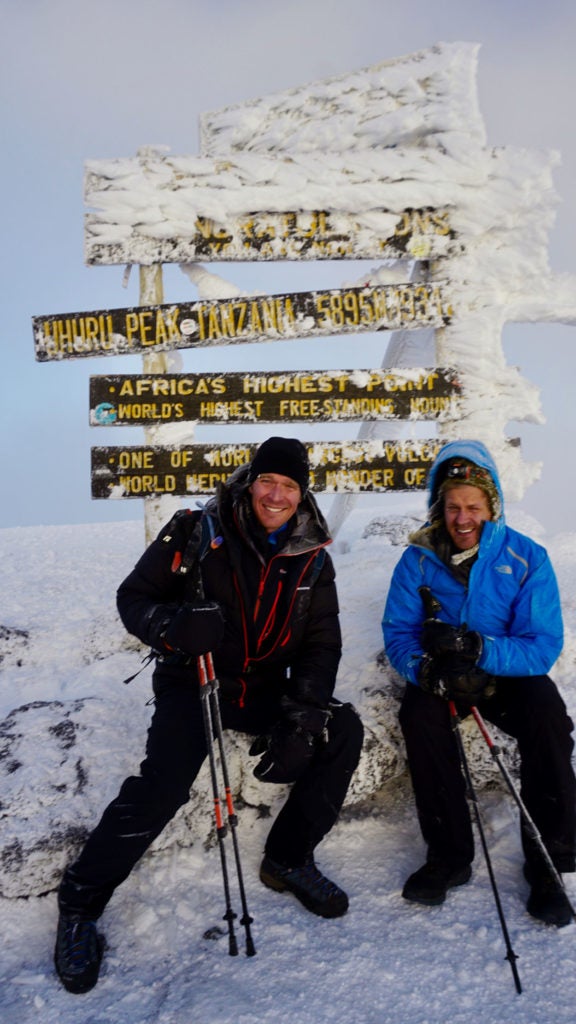
No matter how far you get from your war, in terms of both miles and years, you can never truly forget about it. Especially when your war hasn’t ended yet. Especially when you still have friends in harm’s way, even if your country doesn’t seem to remember or care all that much.
Yet, despite the interminability of our wars, my brother and I have both managed to move on.
Today, Drew, who is 33 years old, lives in New York City and works on Wall Street. Engaged to a lovely woman named Gabrielle, he’s found both peace and love.
I found my own peace when I met and fell in love with my wife, Lilly. We’ve been married for two years now, and those two years have been the happiest of my 37-year-old life. I’ve learned that a well-lived life is measured by its impact on the people you love—not on the heights you achieve.
Reunion
Over the years, Drew and I have drifted apart. Lately, we’ve gone months, sometimes as much as a year without seeing each other. Life just got in the way. You know how it is.
Yet, despite the barriers of distance and time that came between us, the trajectories of our lives intertwined once again. Through love, we’d both finally achieved escape velocity from war’s gravitational tug.
I can’t remember who reached out first, but one of us took that all-important first step and broached the subject of our estrangement. In any case, Drew and I resolved to reconnect. The question was how to do it. We clearly had to do something epic. We had to find an experience worthy of this pivotal moment in our lives, as well as our adventurous spirits.
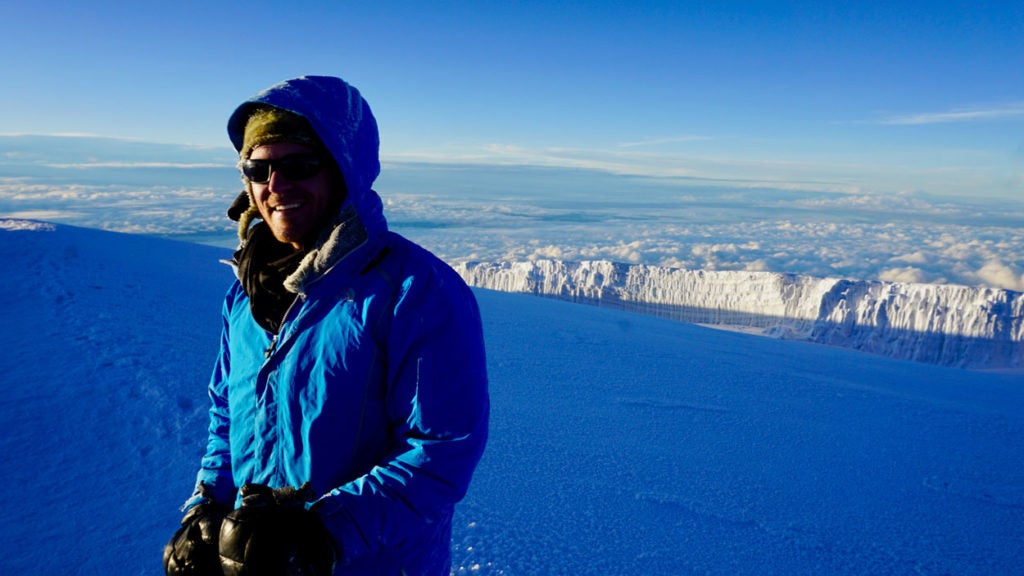
So we chose to climb Mount Kilimanjaro, and we set the second half of October as the time to do it.
Life, as is its habit, conspired to interrupt our plans. I underwent hernia surgery over the summer, which put my fitness for the climb in doubt. Drew, for his part, had to find a way to take two weeks off from his high-paced job on Wall Street.
But we found a way. Come hell or high water, we were going to make the trip happen. And, by God, we were making it up that damn mountain.
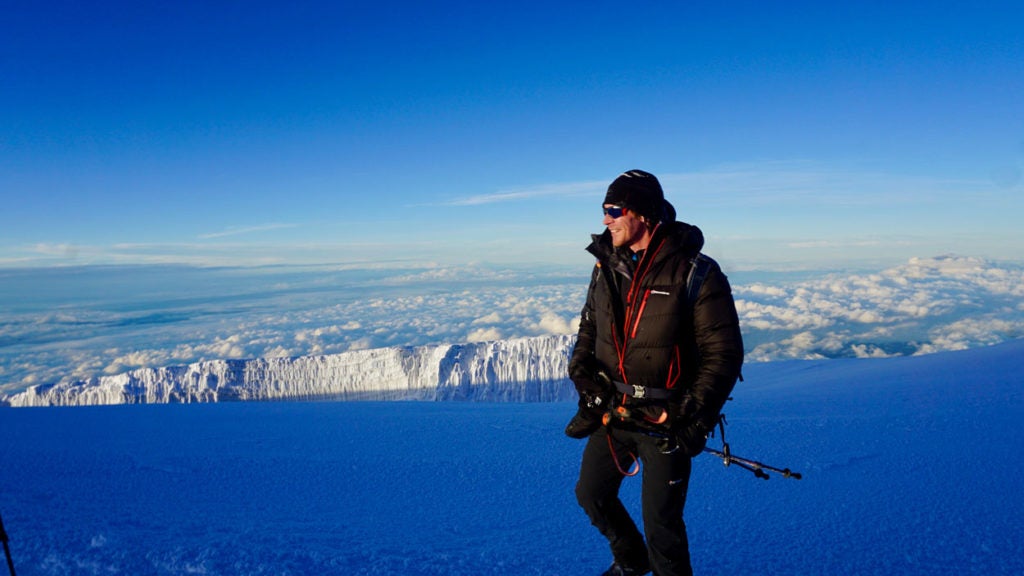
Truly, climbing Kilimanjaro is somewhat of a vanilla adventure. Many people had already done what we were about to do. And unlike climbing Mount Everest, there’s no real objective danger. Basically, it’s a steep walk. Yet, despite what Kilimanjaro lacks in technical difficulty, it makes up for in its athletic challenge. To go from sea level to 19,340 feet in less than six days is a legitimate test of anyone’s physiology and grit.
When we chose the venue for our reunion, some people asked Drew and me why we didn’t want to travel through Europe together, or escape to some tropical beach and sip on cocktails.
But if you know anything about us, then you’d know that was never an option. We needed a mountain to climb.
Arrival
From Amsterdam we flew to Kilimanjaro Airport in Tanzania. We met our driver, loaded into a rugged Land Rover, and set off, bumping along into the night and the bush.
We spent our first night in Africa at a coffee plantation. The next morning when we woke it was raining. We’d yet to see Kilimanjaro save for its lower flanks by the time we met our guide and embarked for the trailhead.
It was a roughly three-hour drive along the Tanzania-Kenya border. Along the way, we passed vignettes of African life on the roadsides—little snippets of another world, alien from the one in which we’d originated, showing how far we’d come. A distance not only measured in miles, but by some other quantity, too, which words are poorly suited to describe.
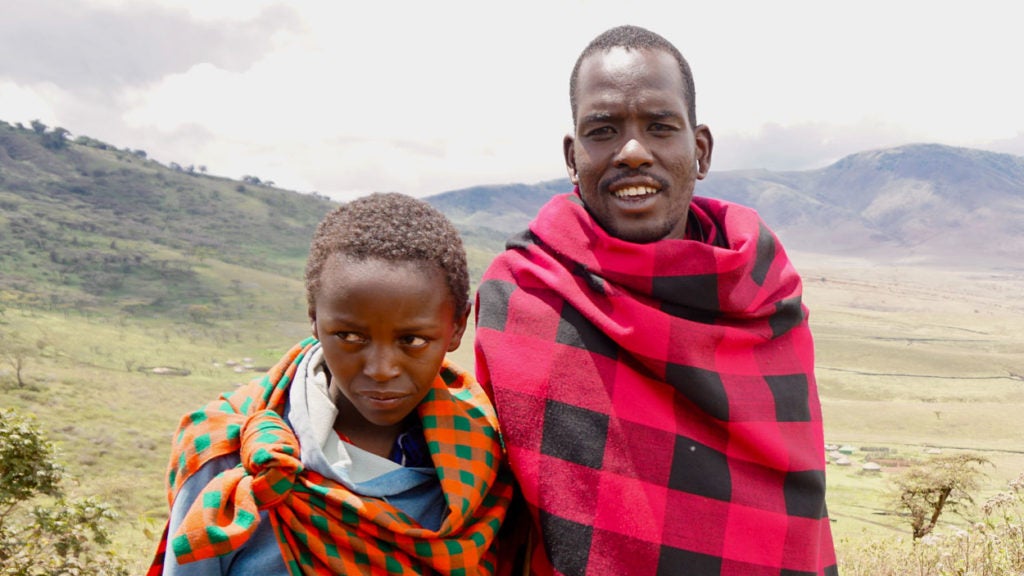
The best I can do is to tell you that Tanzanians smile more than any other people I’ve so far encountered.
Tanzanians aren’t rich, not by a long shot. Nor do they lead easy lives. Yet, their pleasant nature and optimistic outlook spoke volumes about the unnecessary trappings that we Americans sometimes assume are necessary for a happy and fulfilled life.
Once we’d arrived at the mountain’s base, Drew and I donned our hiking packs and set out, ascending at first through an alpine forest. Our guide set a conservative pace, and the going felt easy.
We camped that first evening in a clearing within the forest. In the night, while on his way to the latrine, Drew shined his headlamp onto the tenebrous woodline and spotted a pair of glowing, cat-like eyes. He returned to the tent to tell me what he’d seen.
I asked Drew if he wanted me to go back out with him.
“You bet,” he said with dignity.
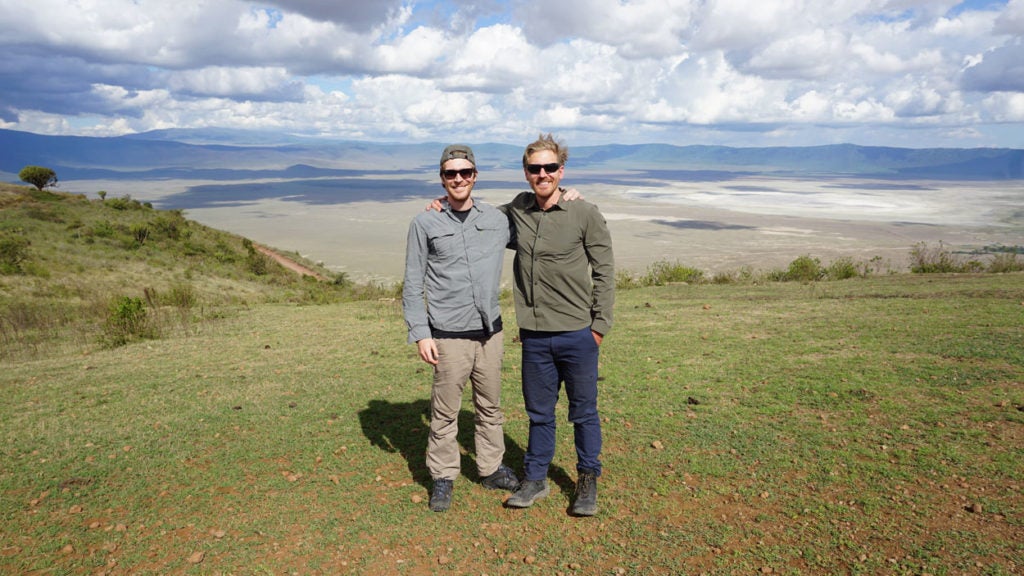
Outside, I shined my own headlamp toward the darkened woodline and saw the glowing eyes, too. The eyes were still and clearly fixed on my brother and me. We stood our ground—not due to courage, mind you, we were simply transfixed. “This is so cool,” we both thought.
The next day dawned clear and at last we saw the summit in its entirety. Above us, the fabled snows of Kilimanjaro reached into the dark blue sky. The view simultaneously inspired us and reminded us how far we had left to go.
A mountain can seem insurmountable if you consider, from its base, the sum total of the effort required to climb it. Yet, if you break down the climb into manageable units of effort, then the whole enterprise doesn’t seem so daunting anymore.
“I can do the next day’s work,” you confidently declare. And it only takes a few strung-together days of hard work before you’ve done enough to reach the summit.
You simply keep taking one step higher until there’s nowhere higher to go. It’s no more complicated than that.
The Climb
The days went by. We climbed higher and higher. The air got thinner and thinner.
We settled into the more rugged version of living that we once knew so well as younger men, but had rarely experienced in the course of our civilian lives.
No matter. Our bodies and our minds easily remembered what it’s like to live in a tent and spend each day engrossed in physical effort. We woke at sunrise and slept at sunset. Our daily concerns extended no further than the daily chores required to keep us going. Eating enough; staying hydrated; treating blisters; deciding how many layers of fleece, down, and Gore-Tex to wear that day.
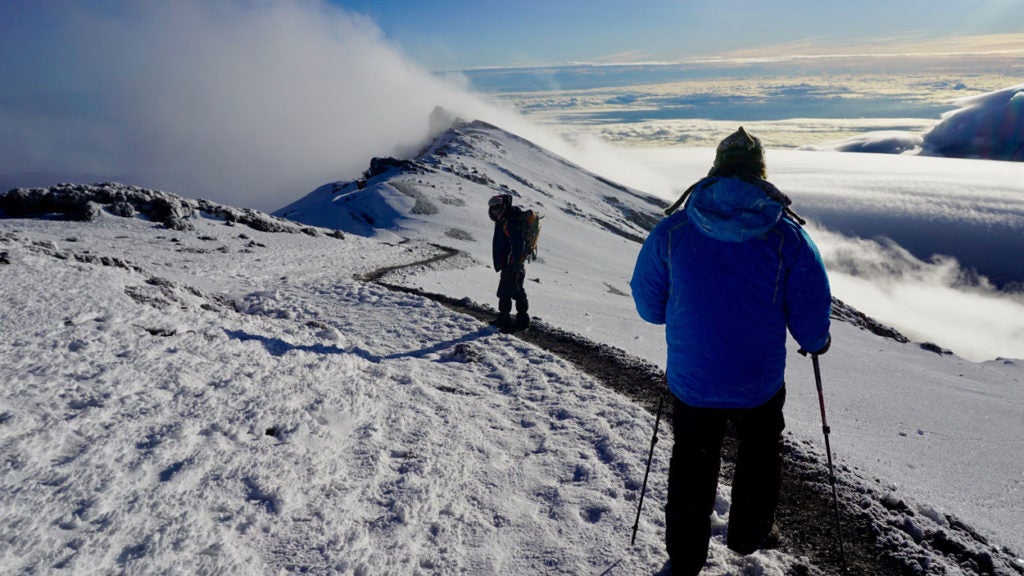
Free from emails and social media and the stock market and the daily news, life was wonderfully simple. How we wished we could live every day like we live in the mountains, my brother and I both concluded.
After four days of walking we reached Kibo Hut. At 15,420 feet, the air was thin there. You searched for your breath after bounding up inclines that would be nothing to do at sea level.
When I climbed 20,305-foot-high Island Peak in the Himalayas a few years ago, I’d taken weeks to acclimatize to the altitude while trekking on my own through Nepal’s mountainous Khumbu region.
Kilimanjaro, however, rises like an island above Africa’s vast plains. Consequently, it’s practically a straight shot from the volcano’s base to its summit.
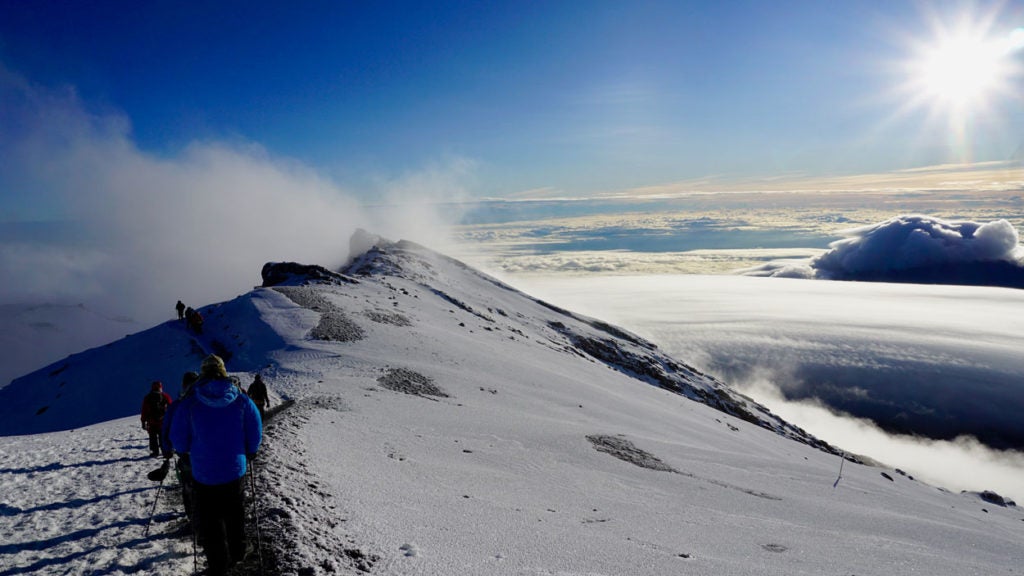
Our itinerary took us from sea level to 19,340 feet in six days. That’s crazy, when you compare our rate of ascent—which is standard-going on Kilimanjaro—with the recommended rate of about 1,500 feet in altitude gain per day that guides recommend for most trekkers or climbers in the Himalayas.
On Kilimanjaro, your daily progress is not limited by your endurance, but by your body’s capacity to endure the rapid increase in altitude. So you have to take it slowly, or, “pole, pole,” as the Tanzanians say in Swahili.
‘Mind of No-Mind’
The night before the summit push Drew and I went to bed amped up with anticipation, eager to tackle the next day’s challenge. At 11 p.m. we woke, dressed for the climb, and set off, moving at the slow plod of high-altitude humping. Never pushing too hard, always in command of our rate of breathing.
Climbing, we each retreated into our thoughts. Consumed by the meditation of constant movement and work, the hours clicked by like minutes. This meditative effect was amplified by the dark and the quiet.
We’d reached that wonderful moment when you forget about the future and the past and only exist in the present. That “mind of no-mind,” as the Eastern mystics call it, is a state of being so devilishly hard to achieve in normal life. In fact, it’s a condition I’ve only otherwise experienced in war.
I believe that’s why so many soldiers end up missing war, and why so many wanderlusting weekend warriors, discontent with so-called normal life, risk their lives and fortunes to climb the world’s highest peaks.
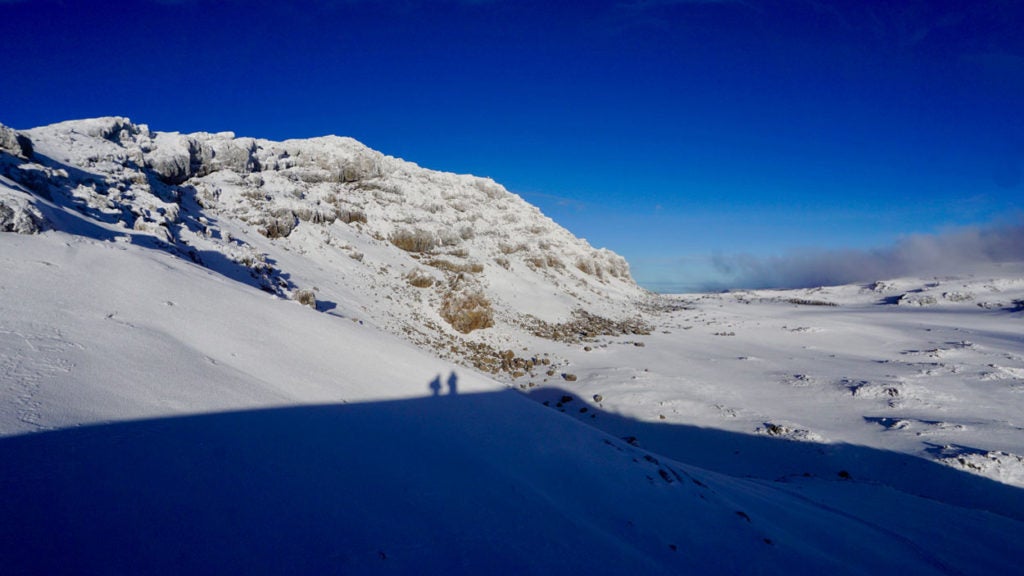
Few other places on earth (except, perhaps, for the polar regions or the oceans) allow you to live so much on instinct alone, where any thought or emotion not immediately useful to your survival is simply unnecessary.
In such potentially lethal environments, you are momentarily unbound from worrying about yesterday or tomorrow. You have to exist wholly in the present moment in order to survive it. All that matters is now.
We climbed through the hours. We were near the crater rim when the storm began. First came a touch of wind. Then the clouds rolled in, concealing the stars. Minutes later, we were in a gale. The blowing snow was like sand blasting our faces. It got cold, too. Really cold. We put on all our layers, lowered our eyes, and kept plodding upward.
At last we reached the crater rim at a place called Gilman’s Point—18,652 feet high. We stopped briefly for a candy bar and a sip of tea. Down below, like swirling fireflies, the headlamps of other climbers slowly materialized through the storm as they lumbered up the volcano’s flank.
The Summit
From Gilman’s Point we had about another hour or so to go, tracing along the crater rim to its highest point at Uhuru Peak, the true summit of Mount Kilimanjaro.
We pressed on and as the distance to our goal eroded the day began its arrival.
At first, a smear of color on the distant horizon. Then, bit-by-bit, the rising sun illuminated the far-off clouds in every shade of orange and yellow you can imagine. Slowly, the newborn day revealed the immense landscape through which we had unknowingly passed in the night. We’d been in this spectacular arena for hours, but could only now, by the grace of the rising sun, appreciate its beauty at last.
The tears froze on my eyelids. But I didn’t mind.
I’d never felt stronger than I did during those final few hundred yards to the summit. Propelled by a strength more inexhaustible than any produced by my lungs or muscles, I literally jogged the remaining distance to the summit, snapping a flurry of pictures along the way.
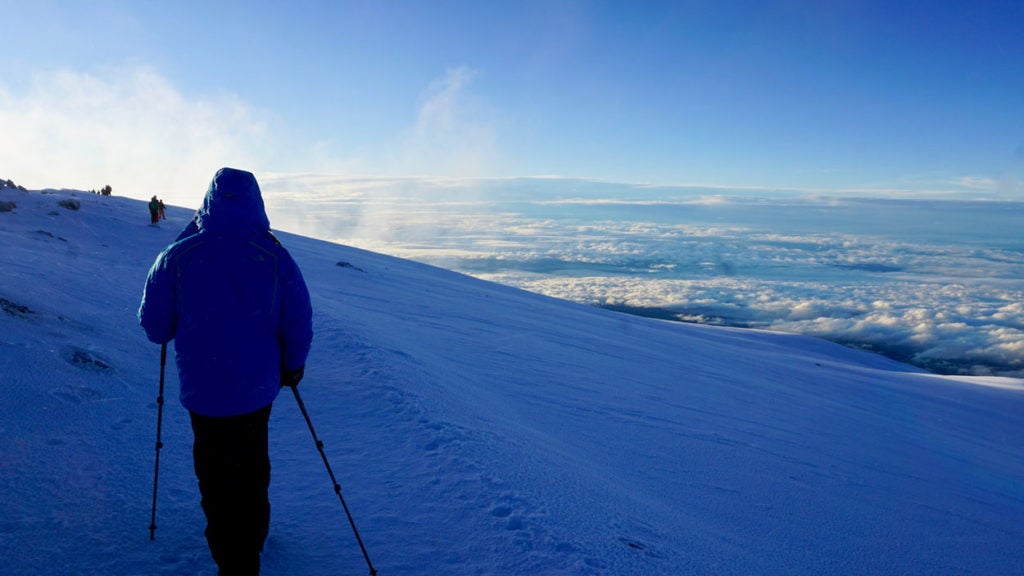
At 37 years old I discovered a wellspring of strength of which I was unaware. “How much untapped potential remained within me?” I wondered.
When Drew and I topped out the gale was in full force; we could lean our body weight into the wind it was so strong. Luckily, though, the clouds had parted and we could see forever. Distances disappeared in the hyper-clear, high-altitude light.
“I’m so happy,” Drew yelled over the wind.
I wanted to tell him how happy I was, too. Not for achieving the summit. But for the journey we had taken together to get there. A journey that began long before we ever set foot on the mountain.
I had a lot to say. But in that moment, all I could manage was a hug.
We spent a few minutes at the summit, took a few photos, and then started down.
By the time we got back to our tent at Kibo Hut, we were beat. We’d been going for almost nine hours. Yet, we had little time to rest. Our plan was to descend to a lower camp that day, and we had another 6 miles of hiking left to go. So, we quickly ate some popcorn, downed some hot chocolate, and resumed our march.
When we reached our final destination several hours later, Drew said to me, “That was the hardest thing I’ve ever done. But it was the best experience of my life.”
Then he paused, put a hand on my shoulder.
“And I’m so glad I shared it with you,” he said.
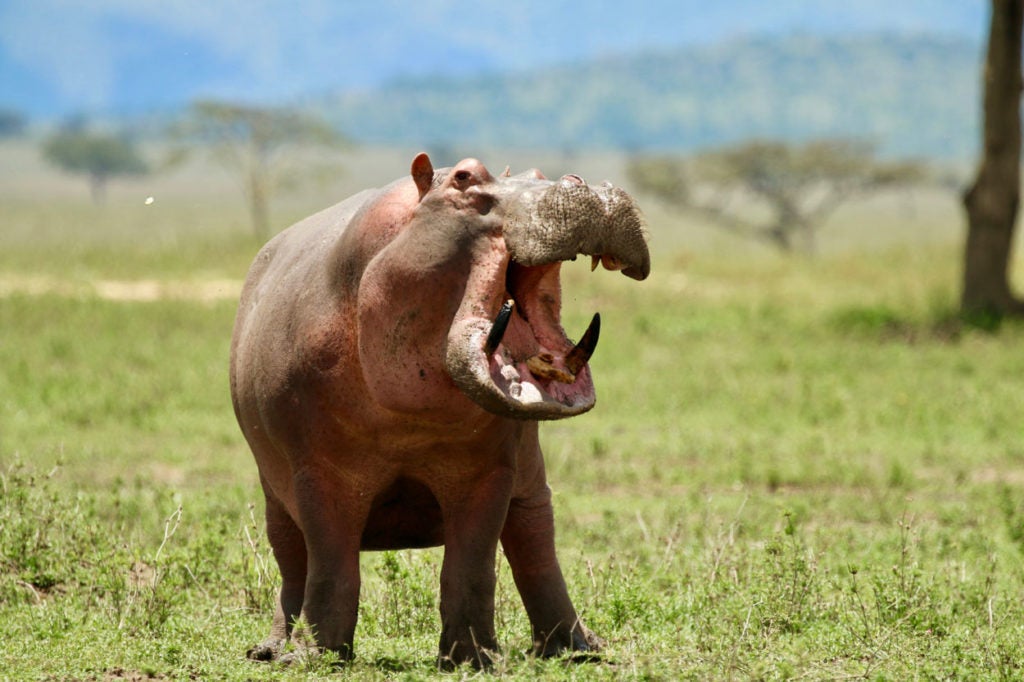
The next day we hiked off the mountain. The day after that we began a safari. For a week, Drew and I traversed the Serengeti and the Ngorongoro Crater. We had a glimpse of Africa’s natural wonders and its incomparable wildlife—as well as what civilization looks like at some of humanity’s most remote, rugged outposts.
My brother and I have never spent a happier time together.
Farewell
Drew and I often wonder, “Why us?”
Why were we so lucky?
What did we do to win the lottery of life and be born in the United States to a responsible and loving family? We are both proud to have served our country in war. And, most importantly, we’re grateful for our wonderful parents and for the women who love us.
In our lives, my brother and I have already seen and experienced the best of what life has to offer. We have also seen suffering and war. Thus, Drew and I are gifted with a uniquely valuable education. We truly appreciate how lucky we are because we can measure our lives’ blessings against the alternatives.
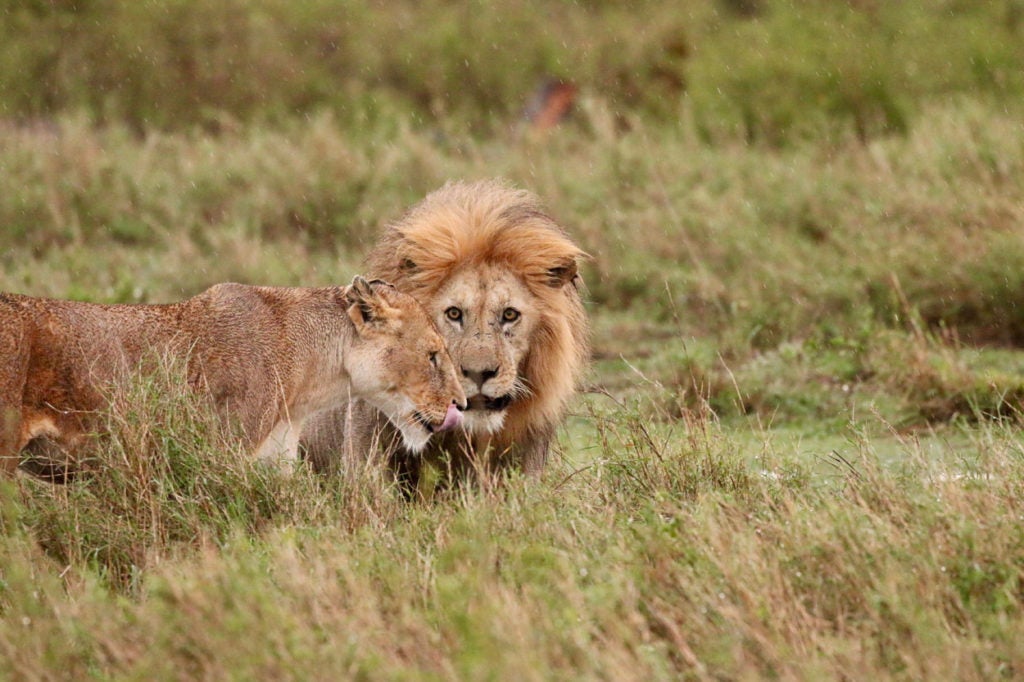
True happiness, in my opinion, is to know what gifts you’ve been given and to have the perspective to wisely measure the gravity of your problems. And there are no more immediately lethal problems than those found in a war, or while on the slopes of a high-altitude mountain. In those places, life becomes more precious. You are thankful to just breathe and exist. Everything else is a bonus.
On the last day of the trip, Drew and I hugged each other goodbye. Again, out of habit, I found myself emblazoning the memory in my mind as I had in the past, when I was on my way to war or while in it. Yet, this time I didn’t worry about never seeing Drew again. Rather, I simply wanted to remember this moment because I didn’t want it to end.
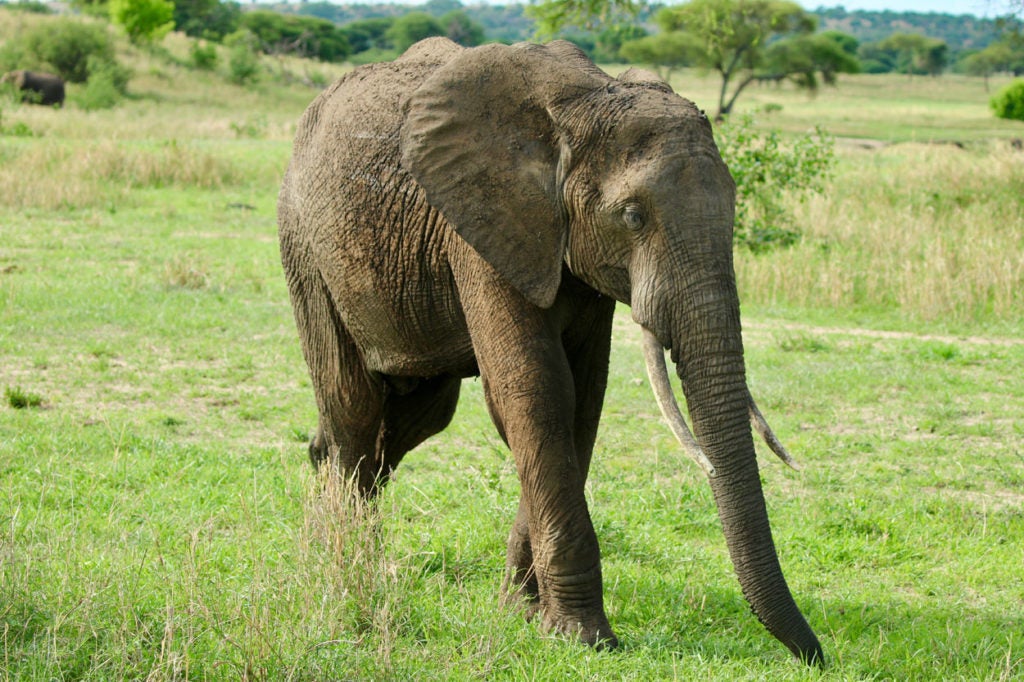
Sir Edmund Hillary, the New Zealander who alongside Tenzing Norgay first climbed Mount Everest in 1953, once wrote: “It is still not hard to find a man who will adventure for the sake of a dream or one who will search, for the pleasure of searching, not for what he may find.”
Returning to peace and finding it are not one in the same, as my brother and I have learned. But both are possible, in the end, if you don’t give up the search.
